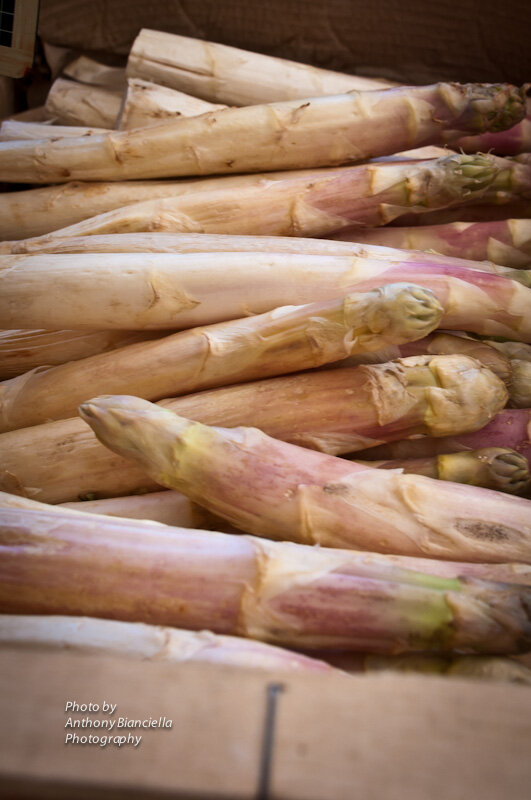France Culinary Travel: Provence's Lavender Fields and Luminous Meals
France Culinary Travel: Provence's Lavender Fields and Luminous Meals
Touring the markets, restaurants, and vineyards of France's sunny southeastI found this great and informative piece by Julie Mautner and had to share it with you. If you are thinking of travel to Provence, then you should read this. Plus, for fun, we added our own photos --just to give it a little "zing". A bientot, from Bliss TravelsBy Julie Mautner
The people of Provence see themselves as uniquely blessed: by their brilliant sunlight and Mediterranean climate; by the beauty of their landscape, captured on the canvases of Cézanne and Van Gogh. And most of all, by the flavor and freshness of their sun-drenched cuisine.The Provençals are crazy about food. They're serious gardeners and knowledgeable and passionate eaters. It's the rare Provençal that doesn't have grapevines on the terrace, an olive tree in the garden, or a chicken in the yard. Foraging, whether for wild mushrooms, fresh herbs, or truffles, is a cherished pastime. The France we see in movies — where huge families gather at long garden tables for copious meals — is visible daily all over Provence. If you're invited to Sunday lunch here, you can kiss your afternoon good-bye.
The Place
Asking someone to geographically define Provence is like asking for a recipe for "real" bouillabaisse: Everyone's got an opinion. It has six distinct departments: the Bouches-du-Rhône, the Vaucluse, the Var, the Alpes de Haute-Provence, the Hautes-Alpes, and the Alpes-Maritimes. Within each department are specific regions: The Vaucluse has the Luberon, for instance.

Provence is in full glory in summer, of course, when it seems that all of France (and Europe) descends. Spring and fall are perfect for leisurely food-fueled touring, particularly during the vendange (grape harvest), which starts in early September. Winters are mild, but many places close between November and March. Yet, no matter when you come, you'll find the Provençals are virtuosos in the fine art of food.
The Ingredients
In Provence the idea of terroir — roughly translated as "a sense of place" — is a foregone conclusion. The closer to home something comes from, the better it is. And knowing who raised your lamb or pressed your olives makes it better still. Homemade olive oil, wine, and confiture are cherished holiday gifts.
Provençal meals are planned around the changing seasons. The arrival of the first spring asparagus results in a burst of celebratory cooking. A Provençal would no sooner bake a peach tart in winter than he would grab a Napa Valley Chardonnay from the supermarket shelves. Just about anywhere you go, you can experience food and wine at its source. Bakers will invite you back to see crusty country breads being pulled from the oven; chefs will gesture you into the kitchen to sniff a dirt-caked truffle. Food festivals abound, celebrating all the important products of the region, including melons, truffles, lemons, garlic, lavender, and wines of every type. At village fund-raisers, local favorites such as bouillabaisse, paella, daube (beef stew), and aïoli are dished out in vast quantities, along with plastic cups of local vin du table.
Julie Mautner is a freelance food and travel writer based in St.-Rémy de Provence, France.



